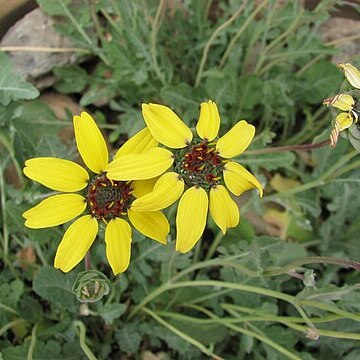A herb. A daisy plant which keeps growing from year to year. It grows 30 cm tall and spreads 30 cm across. The leaves are in a clump near the base. These are deeply lobed and have teeth along the edge. The flowers are in heads on long wiry stalks. The flowers are yellow. The flowers have a scent like chocolate.

